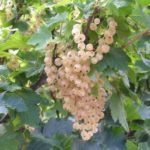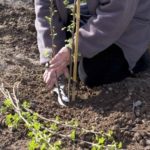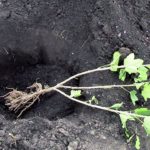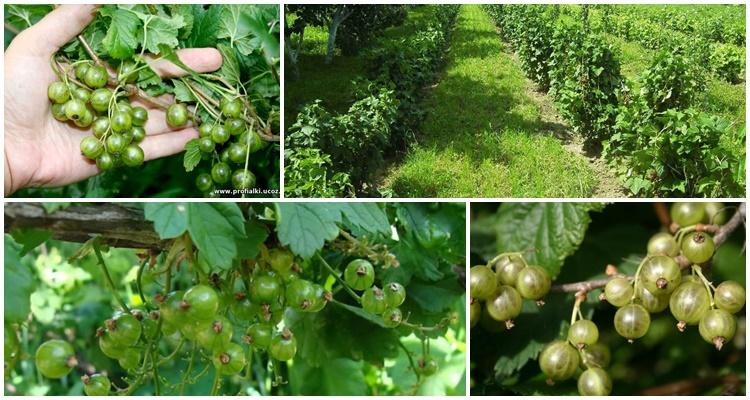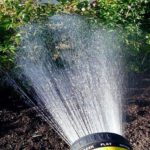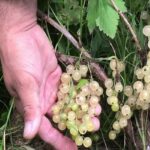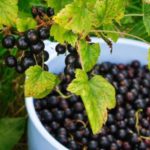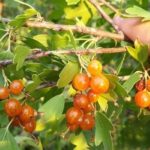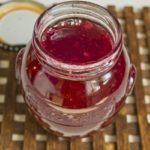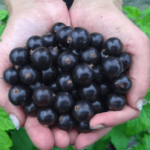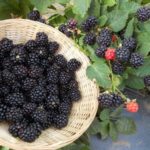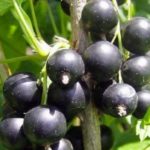White-fruited currants are not as popular as red- and black-fruited ones. But it is also healthy and tasty. Let's consider the description and characteristics of Smolyaninovskaya white currant, its advantages and disadvantages, how to properly plant a seedling, care for the plant, protect it from diseases, and prepare it for wintering. When and how to harvest berries, how to store them.
- Description and characteristics of culture
- Advantages and disadvantages of white currant Smolyaninovskaya
- Subtleties of growing varieties
- Dates and place of landing
- Preparation of seedlings
- Landing technology
- Recommendations for plant care
- Watering and fertilizing the crop
- Pruning and wintering
- Diseases and pests
- Harvesting and storage rules
Description and characteristics of culture
The Smolyaninovskaya variety is fast-growing, medium-early ripening. Grows well in regions where winters are cold but summers are hot, zoned in the Central and Volga-Vyatka regions.
The height of the bush is up to 1.5 m, the shoots are evenly developed, straight, thick, with smooth brown and green bark. The plant is medium-sized, moderately spreading. Flowers and berries are collected in long, up to 10 cm, brushes. The fruits are round, medium in size, weighing 0.6-1 g, transparent, light, with shiny skin. The berries are sweet and sour, juicy. Productivity: from 1 adult Smolyaninovskaya currant bush you can harvest up to 6 kg. The berries ripen in mid-summer, almost simultaneously. They hold onto the stalks firmly and do not fall off.
Advantages and disadvantages of white currant Smolyaninovskaya
Subtleties of growing varieties
In order for Smolyaninovskaya currant bushes to grow and bear fruit well, they need to be planted correctly. To do this, you need to choose the most suitable place in the garden, prepare the soil, the seedlings themselves, and plant them within the recommended time frame.
Dates and place of landing
Seedlings are planted in the Smolyaninovskaya spring, when the snow has melted and the ground has dried out a little, or in the fall, in October, but a month before the onset of cold weather. It is necessary that the seedlings are in a dormant state, that is, the leaves have not yet blossomed or have already fallen.
You need to choose an area for currants that is open, sunny, but not blown by the wind.It should be level, it can be located on a hill, but not in a lowland. Bushes can be planted close to buildings and fences, but no less than 2 m before them.
Preparation of seedlings
Preparing Smolyaninovskaya seedlings is not difficult: you need to trim off the dried ends of the roots with pruning shears, cut off the shoots, and leave 5-6 buds on each. Soak the roots in a solution of a root formation stimulator for 12-24 hours.
Landing technology
The site is prepared for planting Smolyaninovskaya as follows: they dig it up with a shovel, level it, dig planting holes and add fertilizer to them: 1 bucket of humus, 1 liter of ash. Mix with soil so that the roots do not come into contact with the fertilizer. Dimensions of planting holes: depth - 0.5 m, width - 0.6 m, layout: 1.5 m in a row and 2-2.5 m in rows.
Sequence of planting currants: lower the roots of the seedlings into the holes, straighten them, cover them with soil up to the root collars. Water each bush with 1 bucket of water. Mulch the soil around the bushes with plant material.
The Smolyaninovskaya variety is partially self-fertile, so for better pollination of flowers, next to this currant you need to plant plants of a different variety that blooms at the same time.
Recommendations for plant care
Caring for currants of the Smolyaninovskaya variety is no fundamentally different from caring for plants of any other currant variety. During the growing season, bushes need to be watered, fertilized, treated against diseases, pruned, and covered for the winter. Let's look at these questions in more detail.
Watering and fertilizing the crop
Currants love moisture, despite being drought-resistant, the plants need regular watering. Under an adult bush you need to pour at least 1-2 buckets of water every week.In spring and autumn, the amount of water poured out is reduced. Fertilize plants 3 times a season: before buds open, before flowering and after setting berries. In the spring, nitrogen-containing fertilizers are used - potassium-phosphorus mixtures are used in the 2nd and 3rd fertilizing. Without the use of fertilizers, the berries turn out small and tasteless.
Pruning and wintering
The Smolyaninovskaya variety is distinguished by lush growth of shoots, so pruning must be done every year. It is done in the fall, after the leaves fly off, or in early spring, before the buds open. Dry, frozen, old and fruit-bearing shoots, all diseased and damaged by pests, are cut out. They also remove excess ones that grow inside the bush and thicken it. Thickening leads to poor ventilation and lighting of the bush and to a decrease in yield.
In the fall, after pruning, the tree trunk circles around the currant bushes are insulated with mulch. Its layer should be at least 10 cm. In the northern regions, shoots also need to be covered by wrapping them in agrofibre.
Diseases and pests
The currant variety is resistant to fungal diseases; preventive treatment with fungicides is sufficient to prevent diseases. But Smolyaninovskaya currant is not resistant to bud moths and mites. Therefore, it is always necessary to treat bushes with insecticides, pruning infected branches, and also dig up the soil around the plants in the winter, in which pests can overwinter.
Harvesting and storage rules
The Smolyaninovskaya currant ripens in mid-July. The berries are ready to pick at the same time, so harvesting is easy. The fruits do not wrinkle, they can be transported and stored. Store in a dry, cool, unlit place in containers or bags of 1-1.5 kg. The berries are suitable for fresh consumption and can be used for homemade preparations. The Smolyaninovskaya variety is well adapted to cold and heat, so it can be planted in almost any region. The variety is productive, the berries ripen in mid-summer, at the height of the currant harvest. The variety is resistant to diseases; preventative treatments are sufficient for care.



